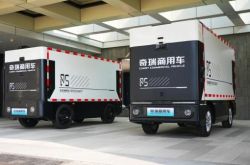The Battlefield of Unmanned Delivery: Vehicle Ownership Is the Key to Entry!
![]() 11/24 2025
11/24 2025
![]() 519
519
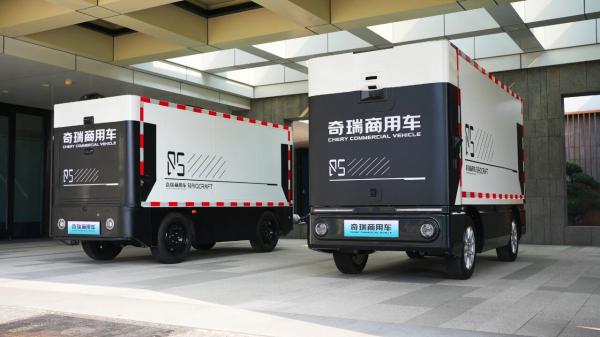 The inaugural unmanned logistics vehicle, a collaborative effort between Chery Commercial Vehicle and QCraft.
The inaugural unmanned logistics vehicle, a collaborative effort between Chery Commercial Vehicle and QCraft.
The unmanned delivery sector is heating up, with fresh entrants joining the fray!
On November 18, 2025, Chery Commercial Vehicle (Anhui) Co., Ltd. (hereinafter "Chery Commercial Vehicle") announced the formal signing of a strategic cooperation agreement on unmanned logistics with Beijing QCraft Intelligent Technology Co., Ltd. (hereinafter "QCraft") on November 15. The two entities aim to jointly develop an industry-leading, mass-produced L4 logistics product, leveraging their respective strengths in autonomous driving technology, vehicle mass production, scenario-based operations, and global market resources. This collaboration is set to drive the widespread adoption of unmanned logistics vehicles across all urban delivery scenarios.
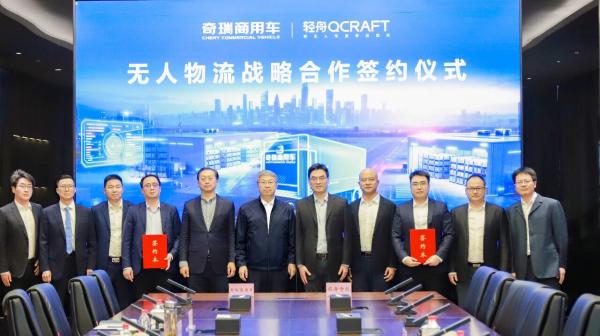
This move is not an isolated incident. Since the start of the year, companies such as WeRide, Desay SV, and MINIEYE have also ventured into the unmanned delivery sector.
Amidst the intense resource deployment by numerous companies, the joint venture between Chery Commercial Vehicle and QCraft transcends mere technological collaboration; it has the potential to reshape the competitive landscape of the unmanned delivery market.
I. Chery's Manufacturing Prowess + QCraft's Algorithm: A Synergistic Integration Reshaping the Industry
Unlike companies such as JD Logistics, Cainiao, Neolix, and Jisi, which independently operate unmanned delivery vehicles, the partnership between Chery Commercial Vehicle and QCraft exemplifies "complementary strengths and powerful alliances," aimed at swiftly establishing comprehensive competitiveness.
Chery Commercial Vehicle, a subsidiary of Chery Holding Group established in 2001, has, over two decades, developed a full-spectrum commercial vehicle business encompassing heavy trucks, buses, light trucks, micro trucks, mini trucks, microvans, VANs, pickups, and MINI trucks.
Leveraging this comprehensive business layout, Chery Commercial Vehicle boasts an industry-leading vehicle research and development, production, and supply chain system. At the market front, it possesses a global delivery network and after-sales service resources, coupled with global operational capabilities and brand appeal.
Building on this foundation, QCraft contributes its cutting-edge technological expertise in autonomous driving.
QCraft, an autonomous driving general solution company established in March 2019 in Silicon Valley, USA, has introduced autonomous driving vehicle solutions such as Driven-by-QCraft and QCraft Chengfeng.
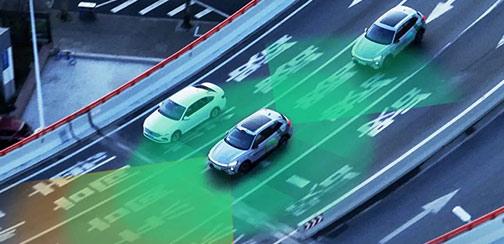
Based on their core competencies, the collaboration between Chery Commercial Vehicle and QCraft represents a profound integration of "manufacturing hard power" and "algorithmic soft power."
For the unmanned delivery industry, this not only introduces a formidable competitor but also pioneers a new competitive model—shifting from "solo endeavors" to "ecological alliances."
Should this collaboration succeed, it will set a precedent and potentially trigger a chain reaction. Other large automotive companies eyeing the unmanned delivery sector may expedite their search for their own "QCraft."
It is precisely this unique collaborative approach that enables them to leverage low-cost, rapid mass production, a comprehensive product matrix, and global channels to empower numerous B-end logistics or commercial flow enterprises lacking self-research capabilities, facilitating their transition to automated and intelligent delivery.
This model may prove even more disruptive overseas, with its competitiveness resting on two pillars:
Firstly, mature autonomous driving technology honed through China's complex scenarios. QCraft has not only established domestic advantages but also, with its team's global top company genes and overseas testing experience from the likes of Waymo and Tesla, ensures the overseas adaptability of its solutions. Secondly, the vast overseas sales network and solid brand influence built by Chery as the "leader" in exports provide a foundation of trust for the localized implementation and service of unmanned delivery vehicles.
When the "Chinese solution" achieves success in overseas markets through a mature localization system, its data feedback and brand momentum may further strengthen and solidify its market position in China.

This differentiated path further validates the industry consensus on the sector's vast prospects. It also directs our attention to a more fundamental question: Why are various giants vying to enter the market?
II. The Billion-Dollar Unmanned Delivery Market Attracts New Entrants
The driving force behind the market's allure stems from the tangible demand it releases.
Cost reduction and efficiency enhancement have always been the core propositions for logistics companies, and unmanned delivery vehicles represent the key path and important breakthrough to achieve this goal.
According to a Yicai Global report in September 2025, feedback from outlets indicates that the cost-reducing effect of unmanned vehicles in the transportation link is significant. Li Li, the head of a courier outlet, stated that his outlet uses unmanned vehicles for 500 to 600 parcels per trip, with 2 to 3 trips daily. Calculating based on 1,300 parcels, the current cost per parcel for unmanned vehicles transporting from primary to secondary outlets is approximately 0.06 yuan, representing a cost reduction of about 0.1 yuan compared to human delivery.
Based on this, a single unmanned delivery vehicle can save nearly 4,000 yuan in costs per month, calculating for 30 days.
Driven by this clear economic calculation, a "race" centered around unmanned delivery vehicles has officially commenced.
To bolster its last-mile delivery capabilities, STO Express plans to deploy over 2,000 unmanned delivery vehicles by 2025, providing more convenient and faster express logistics experiences for last-mile outlets, customers, and consumers.
Similarly, ZTO Express is making rapid strides. According to a recent Securities Daily report, nearly 3,000 ZTO Express unmanned delivery vehicles are currently transporting over 200,000 parcels daily in more than 250 cities, with a cumulative operating mileage exceeding 20 million kilometers.

JD Logistics' ambitious vision has propelled this race to new heights. On October 24, it announced plans to purchase 3 million robots, 1 million unmanned vehicles, and 100,000 drones over the next five years.
Behind this series of intensive deployments lies the enormous scale and business volume of China's express delivery market, which continues to grow, along with consumers' demand for high-quality express delivery services. According to State Post Bureau monitoring data, as of October 11, 2025, China's express delivery business volume had surpassed 150 billion parcels, 37 days earlier than in 2024.
Faced with such a massive volume of parcels, the traditional human-dependent delivery model is nearing its cost and efficiency bottlenecks. The cost reduction, efficiency enhancement, and capacity supplementation represented by unmanned delivery technology are precisely the inevitable choices to address the industry's core pain points and support future market growth.
In addition to express delivery scenarios, the vast urban distribution and instant retail scenarios are opening up even greater incremental space for unmanned delivery vehicles.
According to the Instant Retail Industry Development Report (2024) released by the Academy of International Trade and Economic Cooperation under the Ministry of Commerce, China's instant retail sector continues to grow and is expected to exceed 2 trillion yuan by 2030.
Additionally, Yu Enyuan, the founder of Neolix, stated that the pan-urban distribution market size is approximately 1.8 trillion yuan.
These figures collectively depict a market with enormous potential. Currently, the penetration rate of unmanned delivery is still in its infancy, and the future growth space is extremely promising.
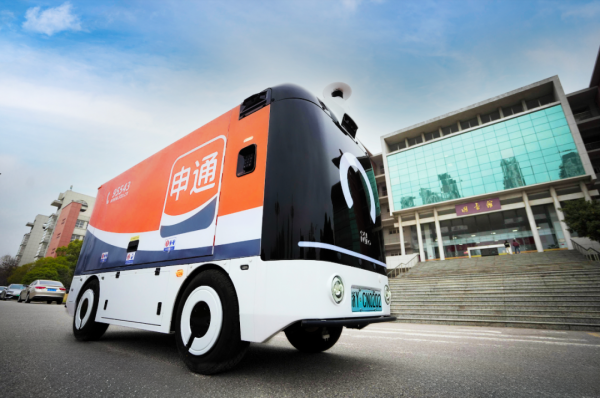
The joint entry of Chery Commercial Vehicle and QCraft is also a response to this trend.
The entry of new players is expected to become a key variable in the development of this field. However, nowadays, the true realization of commercial value does not lie in the vehicles themselves but in large-scale operation.
III. The Unmanned Delivery Arena: Scale Determines Success or Failure
Large-scale operation is an effective means to dilute costs such as research and development and manufacturing.
As a technological product, unmanned delivery vehicles require substantial upfront research and development investments. Only when production and application volumes reach a certain critical point can significant cost reductions per vehicle be achieved through standardized production and supply chain optimization.
Simultaneously, the massive amounts of real-world road data accumulated by large operational fleets will feed into algorithm iterations at an unprecedented pace, improving vehicle reliability, further reducing accident rates and operation and maintenance costs, and forming a growth flywheel of "scale expansion - cost reduction - broader application - further scale expansion."
After years of development and technological progress, the cost of unmanned delivery vehicles has significantly decreased. According to Time Weekly, as of 2025, the cost of unmanned delivery vehicles has dropped by 80% over four years.
The substantial cost reduction directly drives the viability of business models, and the focus of industry competition will gradually shift to accelerating the layout and occupation of diversified scenarios.
In today's society, "involution" has become the most apt term to describe most industries.
What is the essence of involution?
It is essentially a zero-sum game among enterprises after the market enters a stock stage. Faced with this situation, one can either go to extremes in the stock market or actively seek new incremental space.
Most unmanned delivery vehicles use express delivery scenarios as their entry point. When numerous players flood into the same sector, this once blue ocean will gradually turn into a red ocean.
Therefore, building a diversified and multi-dimensional network scenario becomes particularly necessary.
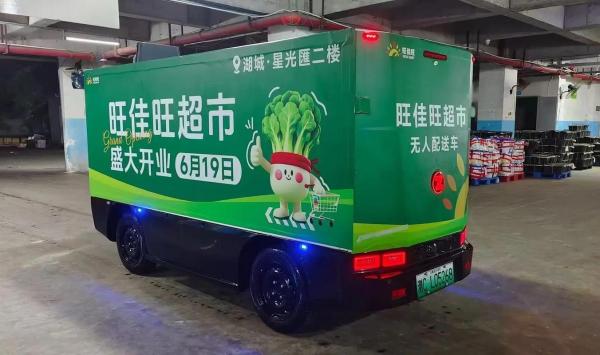
Future competition will no longer be confined to the "express delivery" line but will hinge on who can first weave a large ecological network covering "last-mile" delivery (such as express delivery, supermarket delivery, fresh produce delivery), regional circular transportation (such as industrial parks, enclosed parks), trunk line connections (such as highway service areas), and even professional fields (such as cold chain).
This necessitates enterprises to upgrade from providing a single express delivery capacity to offering comprehensive capacity solutions adapted to different scenarios.
The underlying support for this strategic upgrade lies in a powerful dispatching system.
A powerful dispatching system is the "intelligent brain" of this ecological network. It needs to act like a skilled commander, ensuring that thousands of unmanned delivery vehicles collaborate efficiently in different battlefields, maximizing overall capacity efficiency.
When thousands of unmanned delivery vehicles operate simultaneously in different regions and scenarios, ensuring their orderly operations, achieving efficient energy replenishment and centralized maintenance, quickly diagnosing and resolving faults, and continuously optimizing single-vehicle performance through data closures will directly determine operation costs and service quality.
The story of unmanned delivery vehicles begins with vast market prospects and ultimately rests on the solid commercial foundation of large-scale operation.
It tests not only the ability to manufacture vehicles but also the comprehensive ecological construction ability to integrate technology into real-world scenarios and continuously generate positive returns, forming a self-reinforcing cycle.
When this cycle system operates at full capacity, unmanned delivery vehicles will deliver not only profits on corporate financial reports but also an efficiency revolution in the entire social logistics system.


